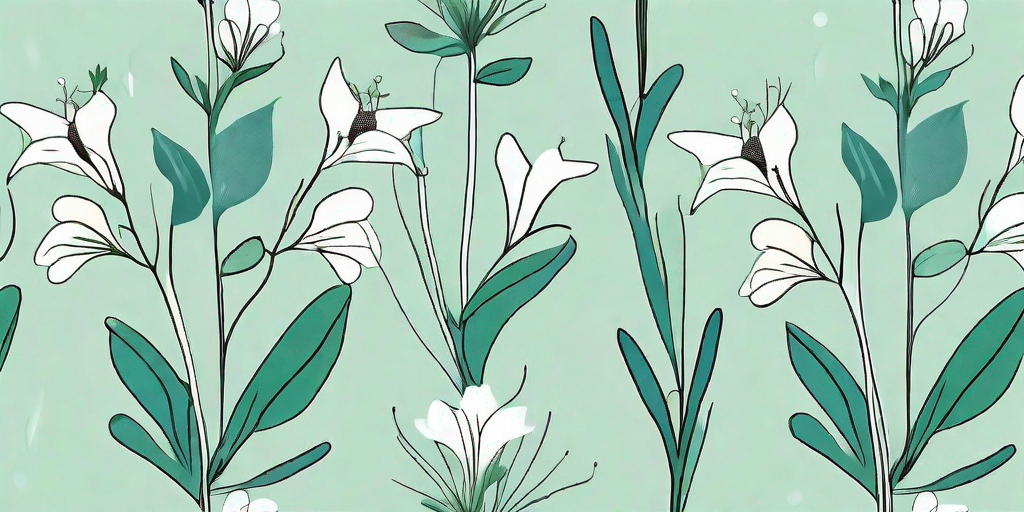
Ah, the Lobelia, a perennial plant that has charmed gardeners and botanists alike with its vibrant blooms and hardy nature. This humble plant, often overlooked in favor of flashier flora, is a true gem in the garden. But what makes it so special? Let's dive into the world of Lobelia and discover its beauty and benefits.
The Lowdown on Lobelia
First things first, let's get to know our star a little better. Lobelia, belonging to the Campanulaceae family, is a genus of flowering plants that includes over 400 species. These plants are native to many parts of the world, including the Americas, Africa, and Asia. They come in a variety of shapes and sizes, from compact, low-growing varieties to taller, more robust species.
One of the most popular varieties is the Lobelia erinus, also known as the trailing lobelia. This variety is a favorite among gardeners for its stunning blue flowers and its ability to spill over the edges of containers and hanging baskets, creating a waterfall of color. Now, isn't that a sight to behold?
Colorful Characters
While the trailing lobelia's blue flowers are a crowd favorite, don't be fooled into thinking that's the only color these plants have to offer. Lobelias are quite the chameleons of the plant world, with flowers that range from vibrant reds and purples to softer pinks and whites. There's even a variety with yellow flowers, for those who like to mix things up a bit.
And it's not just the flowers that are colorful. Some Lobelia species have variegated foliage, adding another layer of visual interest to your garden. So, whether you're a fan of monochromatic elegance or a riot of color, there's a Lobelia out there for you.
Benefits of Growing Lobelia
Now that we've covered the aesthetics, let's move on to the practical benefits of growing Lobelia. And trust me, there are plenty.
Firstly, Lobelias are incredibly easy to grow. They're not fussy about soil type, and they can handle both full sun and partial shade. This makes them a great choice for beginner gardeners, or for those who simply don't have the time to pamper their plants.
Attracting Wildlife
Another benefit of growing Lobelia is their ability to attract wildlife. Many species of Lobelia are known to attract hummingbirds, making them a fantastic addition to any wildlife garden. And it's not just hummingbirds that love them - bees and butterflies are also frequent visitors, drawn in by the nectar-rich flowers.
So, by planting Lobelia, you're not just adding beauty to your garden - you're also creating a haven for local wildlife. And who wouldn't want to watch hummingbirds flitting around their garden while sipping their morning coffee?
Medicinal Uses
Did you know that some species of Lobelia have been used in traditional medicine? Lobelia inflata, also known as Indian tobacco, has been used by Native American tribes to treat respiratory conditions. While we don't recommend trying this at home (always consult a healthcare professional before using plants for medicinal purposes), it's fascinating to learn about the different ways plants have been used throughout history.
So, there you have it. Lobelia - a plant that's not only beautiful, but also beneficial to wildlife and steeped in history. What's not to love?
How to Grow Lobelia
Convinced that you need some Lobelia in your life? Great! Let's go through the steps of growing these beauties.
- Choose your variety: As we've mentioned, there are over 400 species of Lobelia, so you'll want to choose the one that best suits your needs and preferences. Do you want a low-growing variety for your borders, or a taller species for your flower beds? Do you prefer blue flowers, or are you more of a red person?
- Choose your spot: Lobelias are pretty flexible when it comes to light conditions, but they do best in a spot with full sun or partial shade. They're also not too picky about soil, but they do prefer well-draining soil.
- Plant your Lobelia: You can start Lobelia from seeds or buy young plants from a nursery. If you're starting from seeds, sow them indoors 6-8 weeks before the last expected frost. If you're planting young plants, simply dig a hole that's big enough for the root ball, place the plant in the hole, and backfill with soil.
- Care for your Lobelia: Water your Lobelia regularly, but be careful not to overwater. They also benefit from a light application of fertilizer in the spring.
And there you have it! With these steps, you'll be well on your way to growing your own stunning Lobelia plants.
Frequently Asked Questions
Is Lobelia a perennial or an annual?
Both! Some species of Lobelia are annuals, meaning they complete their life cycle in one year. Others are perennials, meaning they live for several years. The popular trailing lobelia is typically grown as an annual.
Does Lobelia need full sun?
Lobelia can handle a range of light conditions, from full sun to partial shade. However, they do best in a spot with full sun or partial shade.
Is Lobelia easy to grow?
Yes, Lobelia is known for being easy to grow. They're not fussy about soil type, and they can handle both full sun and partial shade. This makes them a great choice for beginner gardeners, or for those who simply don't have the time to pamper their plants.
So, there you have it - the lowdown on the lovely Lobelia. Whether you're a seasoned gardener or a green-thumbed newbie, this versatile plant is sure to bring perennial pleasure to your garden. So why not give it a go? You might just find your new favorite plant.















